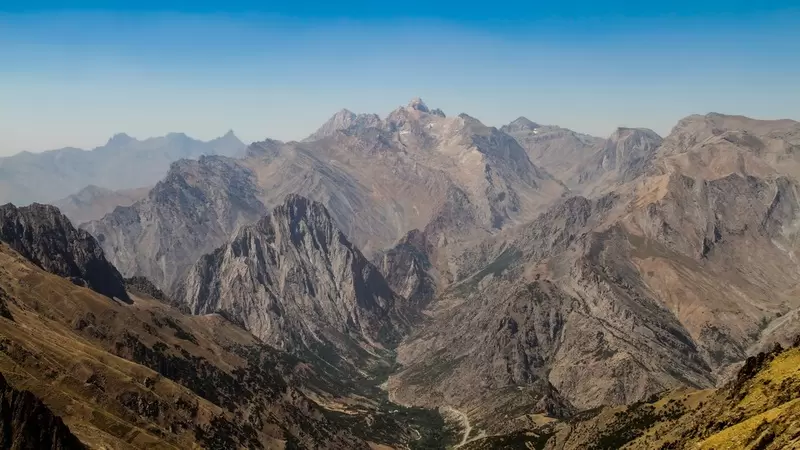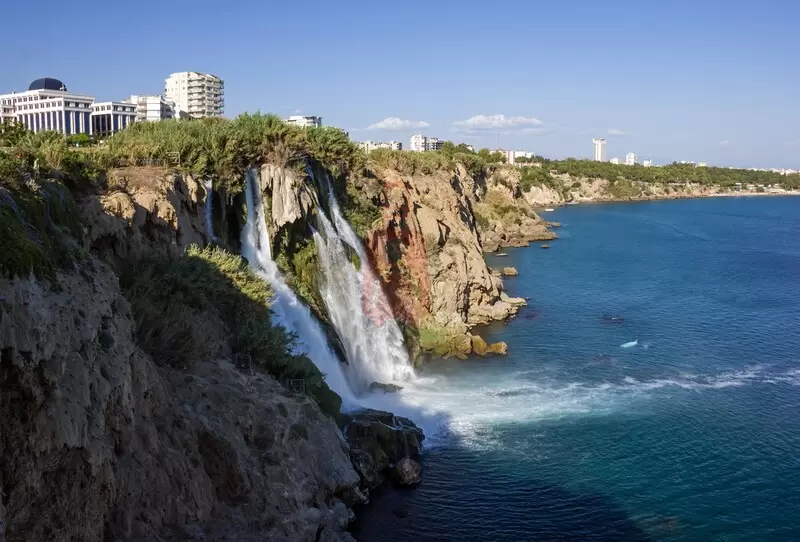
Nestled within the highest mountains of southeastern Turkey lies Uludoruk, located in Hakkari province along the Armenian border. Surpassing 4,000 meters in elevation, it embraces an Arctic-alpine climate with heavy winter snowfall.
Surrounding Uludoruk Mountain, steep scree slopes sustain seasonal flora and grasslands grazed by nomadic livestock. Ibex herds inhabit remote valleys. During summer months, yayla camps dot high altitude pastures.
Winding hiking trails cross glacial landscapes towards summit panoramas. Views extend over rugged terrain filled with glacial lakes and sheer cliff faces. Outdoor pursuits also include mountaineering, wildlife watching and sampling seasonal foods in yayla camps.
Further exploration passes small seasonal villages accessible only by foot. Cultural heritage includes hundreds of archeological caves from prehistoric settlers. Uludoruk Mountain offers glimpses into natural scenery and traditional lifeways still retained along Turkey's most isolated border highlands. Adventurous treks invite crossing its untamed alpine terrain.
Uludoruk Mountain, also known as Mount Uludoruk or Reşko Tepesi, is a prominent peak located in the eastern part of Turkey. Here is some information about Uludoruk Mountain:
-
Location: Uludoruk Mountain is situated in the Kars Province of eastern Turkey, near the border with Armenia. It is part of the Eastern Anatolian mountain range.
-
Elevation: The mountain reaches an elevation of approximately 3,925 meters (12,877 feet) above sea level. It is one of the highest peaks in the region.
-
Geology and Landscape: Uludoruk Mountain is characterized by rugged terrain and features typical of a mountainous region. It is composed primarily of sedimentary rocks and exhibits steep slopes, rocky cliffs, and alpine landscapes.
-
Mountaineering and Trekking: Uludoruk Mountain attracts mountaineers and outdoor enthusiasts due to its challenging terrain and scenic beauty. The ascent to the summit requires mountaineering skills and is recommended for experienced climbers. Trekking and hiking opportunities are also available in the surrounding areas.
-
Natural Environment: The mountain is part of the broader natural environment of the Eastern Anatolian region, which is known for its diverse flora and fauna. The surrounding landscapes include alpine meadows, forests, and high-altitude ecosystems.
-
Cultural Significance: The region around Uludoruk Mountain has historical and cultural significance. It is known for its rich heritage, including ancient archaeological sites, medieval castles, and traditional villages.
-
Accessibility: Access to Uludoruk Mountain can be challenging due to its remote location and rugged terrain. The nearest major city is Kars, which serves as a gateway for exploring the region. It is recommended to plan the visit carefully, ensuring suitable equipment, local knowledge, and necessary permits.
Please note that conditions and accessibility may vary over time. It is advisable to consult local authorities, guides, or tourism agencies for the most up-to-date and accurate information before planning a visit to Uludoruk Mountain.










